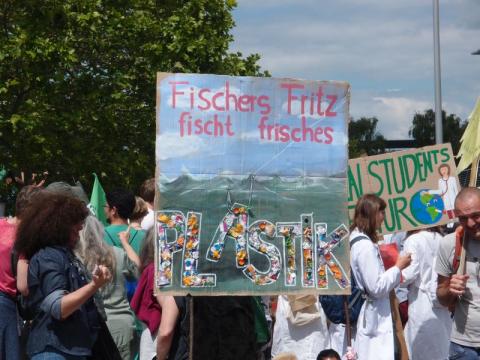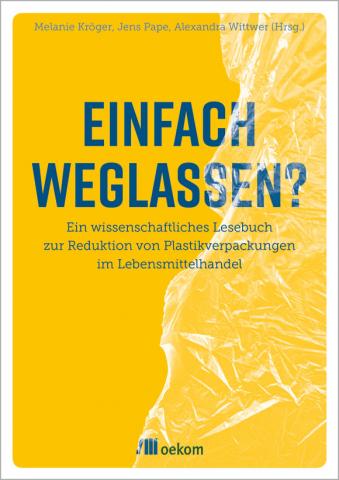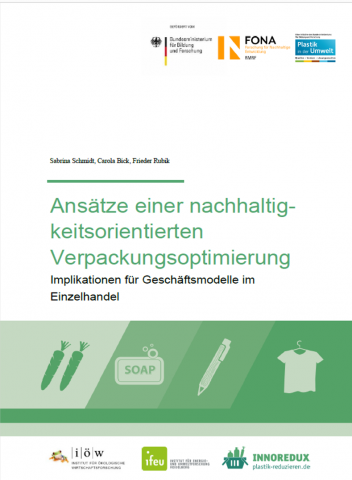Reduction measures
Wege zum nachhaltigen Umgang mit Kunststoffen
The volume of plastics entering the environment is growing worldwide. Since existing regulations are not sufficient to curb the problem, the ever-increasing plastic production and use must be reduced. A systemic approach is needed that holds all actors responsible who produce, use, recycle, dispose and trade in plastic products and packaging.
Factsheet 6: Recycling PET packaging - Innovative PET recycling of multilayer composites
Factsheet 3: Purchasing unpackaged products - Results of a customer survey
We encounter plastic in many forms and functions in everyday life. Especially in supermarkets, extensive plastic packaging often catches the eye of consumers. However, the desire to shop with less packaging does not always translate into the use of more sustainable products.
Factsheet 2: Valuable waste plastic - Floating recycling plant recovers plastics before they enter the sea
In this factsheet, joint project KuWert shows how plastic recycling can be profitable. The research team developed a floating recycling platform, mobile and independent of local structures. The system was tested in coastal cities in West Africa, where a lot of plastic ends up in the sea.
Factsheet 1: Plastic Packaging - What are the possibilities for reducing waste when buying clothes?
The first factsheet of the research focus is dealing with the question of how consumers can save plastic when buying clothes. It is often difficult to know how much plastic is produced along the textile value chain, before a product arrives in the store.
Quiz: Plastic in the Environment – What do you know?
Plastic waste prevention at the municipal level
The discussion about plastic waste is anything but new for German municipalities. In fact, as early as the 1980s, numerous German municipalities were experimenting with plastic waste prevention regulations and waste prevention in general. A further impetus for plastic waste prevention was provided in the early 1990s with the discussions on the introduction of a nationwide packaging ordinance.
Environmental problem: plastic packaging
Numerous one- to two-person households, an increase in mail-order business as well as the popular "to-go" culture are causing a steady rise in the consumption of plastic packaging in Germany. While approximately 1.8 million tons of plastic were produced per year in 2000, this figure had already risen to 3.1 million tons by 2016.
Approaches to sustainability-oriented packaging optimisation
Packaging volumes are continuously increasing in Germany. Plastic packaging, with its short lifespan and low global recycling rates, contributes to the accumulation of macro and micro plastics in the environment. Merely switching to glass and cardboard packaging does not appear to be an appropriate solution, as LCA studies suggest.




